2026 Farizon SV: Everything You Need To Know
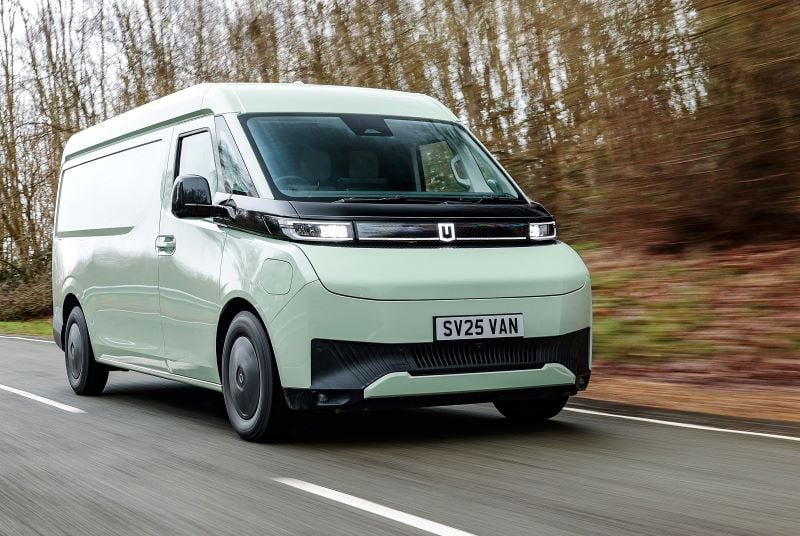
It isn’t easy to revolutionise the humble van, but that hasn’t stopped the Farizon SV – the newest entry into the fledgling electric commercial vehicle market – from giving it a good go.
Indeed, while there is no shortage of BEV (Battery Electric Vehicle) vans on the road right now with everything from the Ford Transit to the Vauxhall Vivaro to the Mercedes-Benz Sprinter now offered with electric powered alternative, there is a small but growing number of entries developed with a battery firmly at their heart.
And this is significant. While the average Citroen Berlingo or Volkswagen Transporter comes with the option of electric, they are vans built to accommodate a conventional engine first and foremost.
By contrast, models like the Volkswagen ID.Buzz Cargo, Kia PV5 or Maxus eDeliver 3 have begun life as BEVs only and this ‘from the ground up’ approach is reflected in their superior range and packaging by comparison to a converted engine-to-battery van.
The latest van to debut with a brief to combine class-leading practicality in a frugal and value-added package is the Farizon SV, which arrives in five body sizes that straddle the Medium and Large Van sectors.
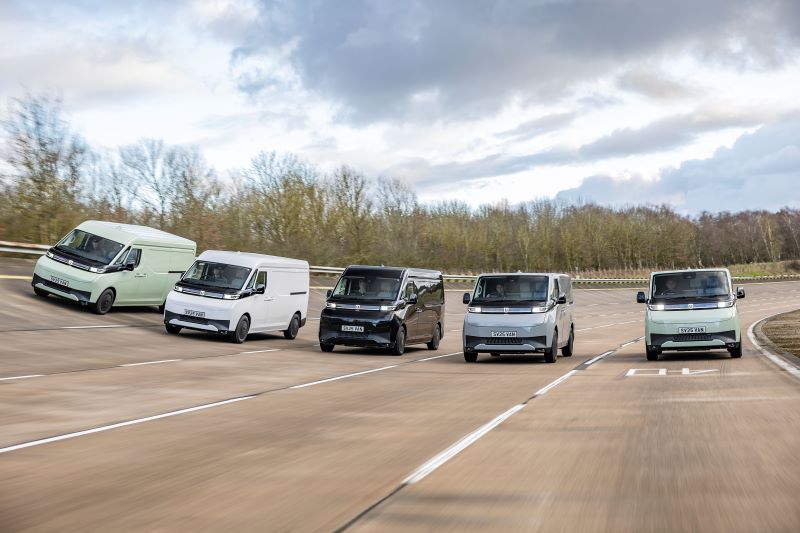
Who Are Farizon?
You’d be forgiven for not having heard of Farizon SV before because it is an all-new model from an ambitious all-new brand in the UK.
In China, however, Farizon is a household name having cornered the zero-emission commercial, truck and bus market to the tune of 20 per cent.
Regardless, it’s not easy to launch a fresh unknown name in such a fiercely contested sector where brand loyalty holds particularly high value, but Farizon can take inspiration from the influx of other Chinese brands that have gained a foothold in the general automotive market, such as BYD and Omoda.
Farizon does have some illustrious backing too. While you may not be familiar with its parent company, Geely, you will know the other brands that come under the brand’s umbrella, including Volvo, Polestar and Lotus.
The electric Farizon SV has a tough ask on its hands to loosen the grip of the established players like Ford, Vauxhall and Renault, but it is aiming to do this by offering state-of-the-art technology and turning its battery-powertrain into a strength of its design, not just keep running costs low.
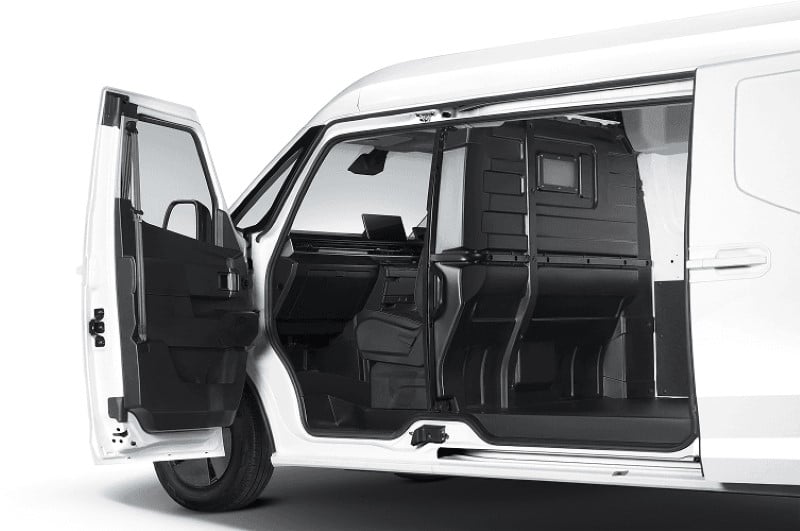
2026 Farizon SV: Dimensions, Loads & Body Styles
| L1 H1 | L1 H2 | L2 H2 | L2 H3 | L3 H3 | |
| Length | 4990mm | 4990mm | 5490mm | 5490mm | 5995mm |
| Height | 1980mm | 2180mm | 2180mm | 2500mm | 2500mm |
| Wheelbase | 3100mm | 3100mm | 3600mm | 3600mm | 3850mm |
| Load Volume | 6.95cu m | 7.92cu m | 9.39cu m | 11.22cu m | 13.0cu m |
| Maximum Payload | 1350kg | 1350kg | 1160-1245kg | 1160-1245kg | 1035-1045kg |
| Towing Capacity [Braked] | 2000kg | 2000kg | 2000kg | 2000kg | 2000kg |
| Gross Vehicle Weight [GVW] | 3500kg | 3500kg | 3500kg | 3500kg | 3500kg |
The Farizon SV is offered in five different body sizes comprising variance of three lengths and three heights.
This allows the SV to straddle both the Medium and Large Van segments, putting it up against both the Ford Transit Custom and Ford Transit.
This is made possible by the SV’s packaging which integrates the battery into the chassis and allows for an unusually short front-overhang where the engine would ordinarily be. With a shorter front-end, it allows for greater available rear cargo capacity.
In L1 guise, while the SV is shorter overall than the equivalent Ford Transit Custom L1, it offers superior cargo volume of 6.95 cubic metres compared to its rival’s 5.7 cubic metres. This overall cargo volume rises to 7.92 cubic metres in the taller L1 H2 guise.
The longer wheelbase Farizon SV L2 extends out to 5490mm, with the 9.3 cubic metres of space rivalling vans in the larger segment as a result.
The largest model – the Farizon L3 H3 – is almost six-metres in length and benefits from a 3850mm wheelbase. Together with a height of 2500mm, the L3 H3 can carry a huge 13 cubic metres of cargo volume.
The expansive cargo volume is made possible by a quirk in the SV’s chassis design that allows the cargo floor to be lower. Not only does this assist with loading, it also allows for a greater cargo capacity.
Another unique feature of the SV’s design is its unusual pillarless design around the front and side doors.
By removing the B-pillar, the SV has an exceptionally wide side cargo bay of up to 1.3m, making loading especially easy.
The SV’s most generous payload capacity of 1350kg comes with the L1 specification versions, while all models have a braked towing capacity of 2000kg.
There is also a ‘payload monitoring system’ which uses ride-height sensors to determine the weight of your vehicle in real-time to ensure you don’t overload, as well as give you a better understanding of the SV’s electric range when heavy.
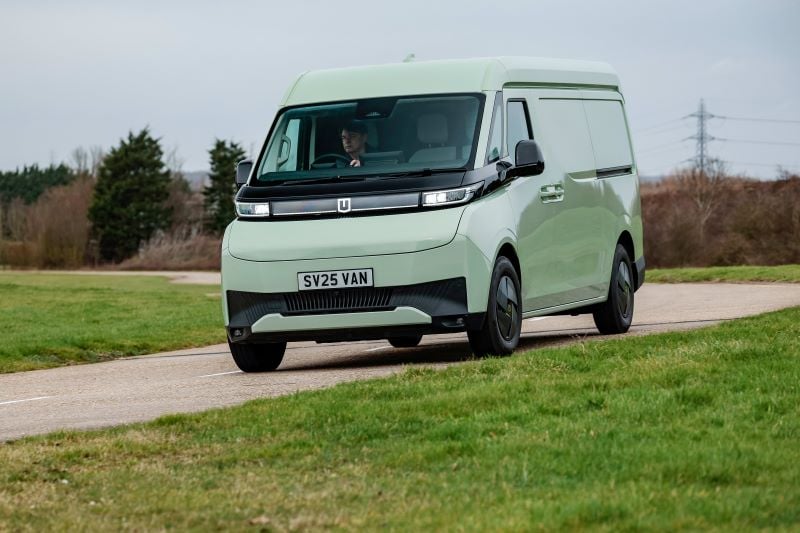
2026 Farizon SV: Engine, Performance & Powertrains
| 67kWh Electric | 83kWh Electric | 106kWh Electric | |
| Powertrain | Electric | Electric | Electric |
| Engine Capacity | 67kWh | 83kWh | 106kWh |
| Transmission | Automatic | Automatic | Automatic |
| Max Power | 228bhp | 228bhp | 228bhp |
| Max Torque | 336Nm | 336Nm | 336Nm |
| Range [WLTP Combined] | 188 miles | 234 miles | 247 miles |
| CO2 [WLTP] | 0g/km | 0g/km | 0g/km |
| Recharge (120kW/20-80%) | 36mins | 36mins | 40mins |
Three electric powertrain options will be available across the range comprising different battery sizes: 67kWh, 83kWh and 106kWh.
The set-up comprises of a 228bhp electric motor driving the front wheels in all Farizon SV models, regardless of battery or size
These then have three drive modes - eco, comfort and sport – which adjust the accelerator, handling and braking settings to suit an economical or a more involved driving experience.
The different battery sizes therefore translate to how far the SV will travel on a single charge.
The entry-level 67kWh model – which is targeted at last-mile delivery services and is only available in L1/H1 and L2/H2 configurations – can achieve 188 miles.
The mid-range 83kWh Farizon SV is offered across the entire range from smallest to largest and offers the best compromise of power and range at 234 miles, while the largest 106kWh goes 247 miles but is only offered on the largest L3/H3 version of the SV.
Taking the mid-range 83kWh version, its combined range of 234 miles puts it adrift of the class-leading – but smaller and pricier – Volkswagen ID.Buzz Cargo, which manages 277 miles, but comparable with the forthcoming Kia PV5’s 247 miles of range.
Nevertheless, the Farizon SV is more frugal than every other electric van in its class, including the Ford E-Transit and Vauxhall Vivaro Electric, while it can also achieve up to 342 miles of range if confined to urban environments.
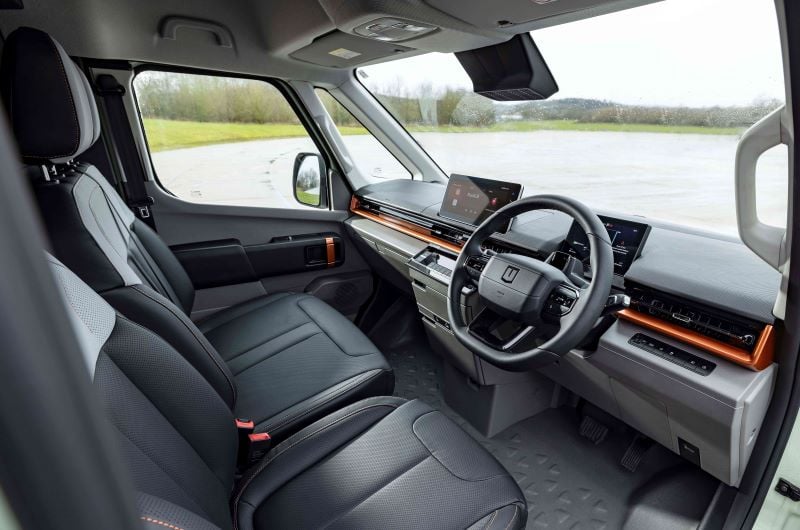
2026 Farizon SV: Specification & Features
| L1 H1 | L1 H2 | L2 H2 | L2 H3 | L3 H3 | |
| 67kWh Electric | X | X | |||
| 83kWh Electric | X | X | X | X | X |
| 106kWh Electric | X |
The Farizon SV complements its state-of-the-art underpinnings with a well-appointed, smart-connected interior that is designed to be spacious and ergonomic.
The dashboard is dominated by a 12.3-inch floating touchscreen which allows for navigation, online streaming, multimedia playback, Bluetooth, Apple CarPlay and ADAS systems, while there is a second 7-inch display for key data directly in front of the driver.
Importantly though, the SV also retains physical buttons on the dashboard to control the heating/cooling to minimise the distraction that occurs with having to use a less tactile glass screen.
Other features available across the Farizon SV range include steer-by-wire, making it the first van in its class to come with such a feature. It’s a space-saving advancement that removes the need for direct mechanical connection to the front tyres.
It’s the same story with the brakes, which adopt digital control to bring the SV to a stop, though you’d be hard-pressed to tell it apart from a more conventional set-up when on the road.
The SV is also brimming with intelligent driver assistance technology with all manner of features available to the driver, including tyre pressure monitoring system, acoustic vehicle alerting system, rear cross traffic alert, lane departure warning system, 360-degree surround view, driver monitoring system, blind spot detection, forward collision warning, predictive collision warning and autonomous emergency braking.
This full house of safety features are among the reasons why the SV has already achieved the highest-possible rating from EuroNCAP.

How Does The Farizon SV Compare To Its Rivals?
| Farizon SV 83kWh L1 H1 | VW ID.Buzz Cargo 79kWh Commerce | Kia PV5 Cargo 71kWh Long Range L2 H1 | Maxus eDeliver 7 77kWh L1 H1 | Ford E-Transit Custom 64kWh 136PS L1 H1 | |
| Powertrain | Electric | Electric | Electric | Electric | Electric |
| Capacity | 83kWh | 79kWh | 71kWh | 77kWh | 64kWh |
| Max Power | 228bhp | 282bhp | 161bhp | 202bhp | 182bhp |
| Max Torque | 336Nm | 550Nm | 250Nm | 330Nm | 415Nm |
| Range [WLTP Combined] | 234 miles | 277 miles | 247 miles | 201 miles | 198 miles |
| CO2 [WLTP] | 0g/km | 0g/km | 0g/km | 0g/km | 0g/km |
| Recharge | 36mins (20-80%) | 30mins (5-80%) | 30mins (10-80%) | 43mins (20-80%) | 39mins (10-80%) |
| Length | 4990mm | 4712mm | 4695mm | 4998mm | 5050mm |
| Height | 1980mm | 1937mm | 1923mm | 1990mm | 1659mm |
| Wheelbase | 3100mm | 2989mm | 2995mm | 3000mm | 3100mm |
| Load Volume | 6.95cu m | 3.9cu m | 4.4cu m | 5.9cu m | 5.7cu m |
| Maximum Payload | 1350kg | 707kg | 690kg | 1200kg | 966kg |
| Towing Capacity [Braked] | 2000kg | 1200kg | 750kg | 1500kg | 2250kg |
| Gross Vehicle Weight | 3500kg | 3150kg | 2650kg | 3500kg | 3225kg |
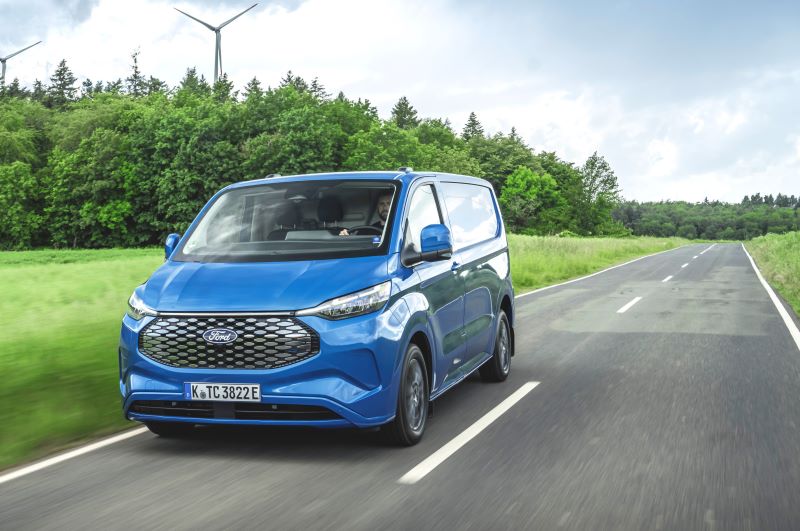
Lease An Electric Van With Vansdirect
Leasing a new electric van with Vansdirect has never been easier and better value.
Get the right electric van at the right deal, right now with the best electric van leasing deals available across a wide range of models, including the Maxus eDeliver 7, Volkswagen ID.Buzz Cargo and Vauxhall Vivaro Electric.
Speak to our expert team today and you could be driving a new electric van for less than you think, sooner than you thought.
















